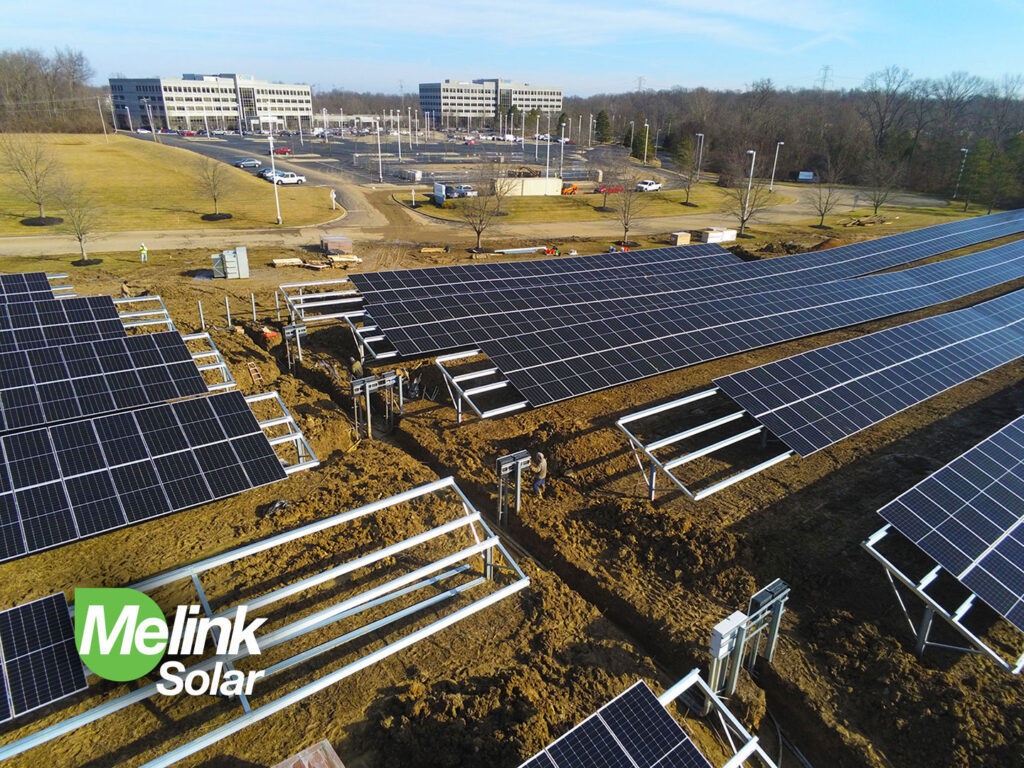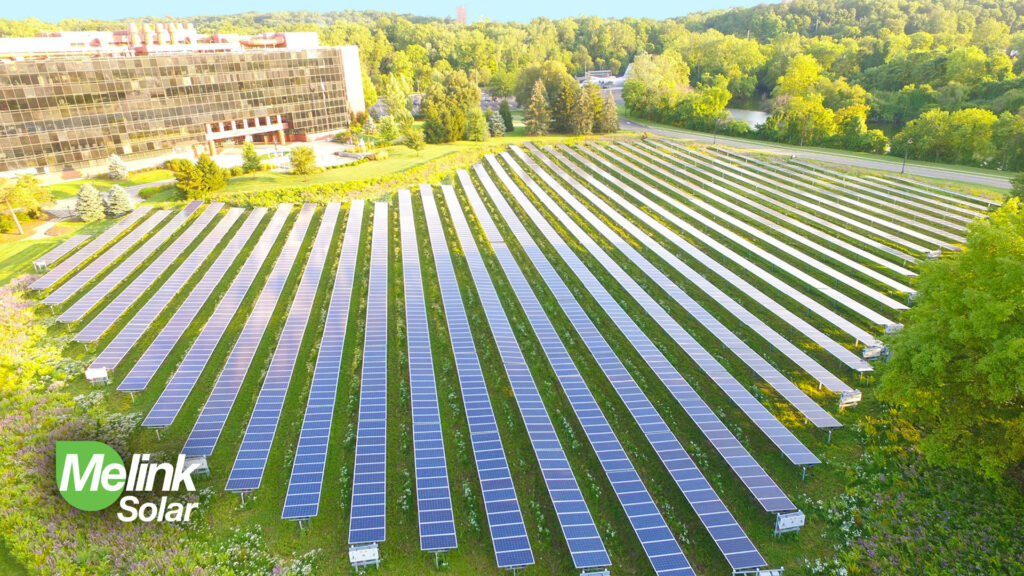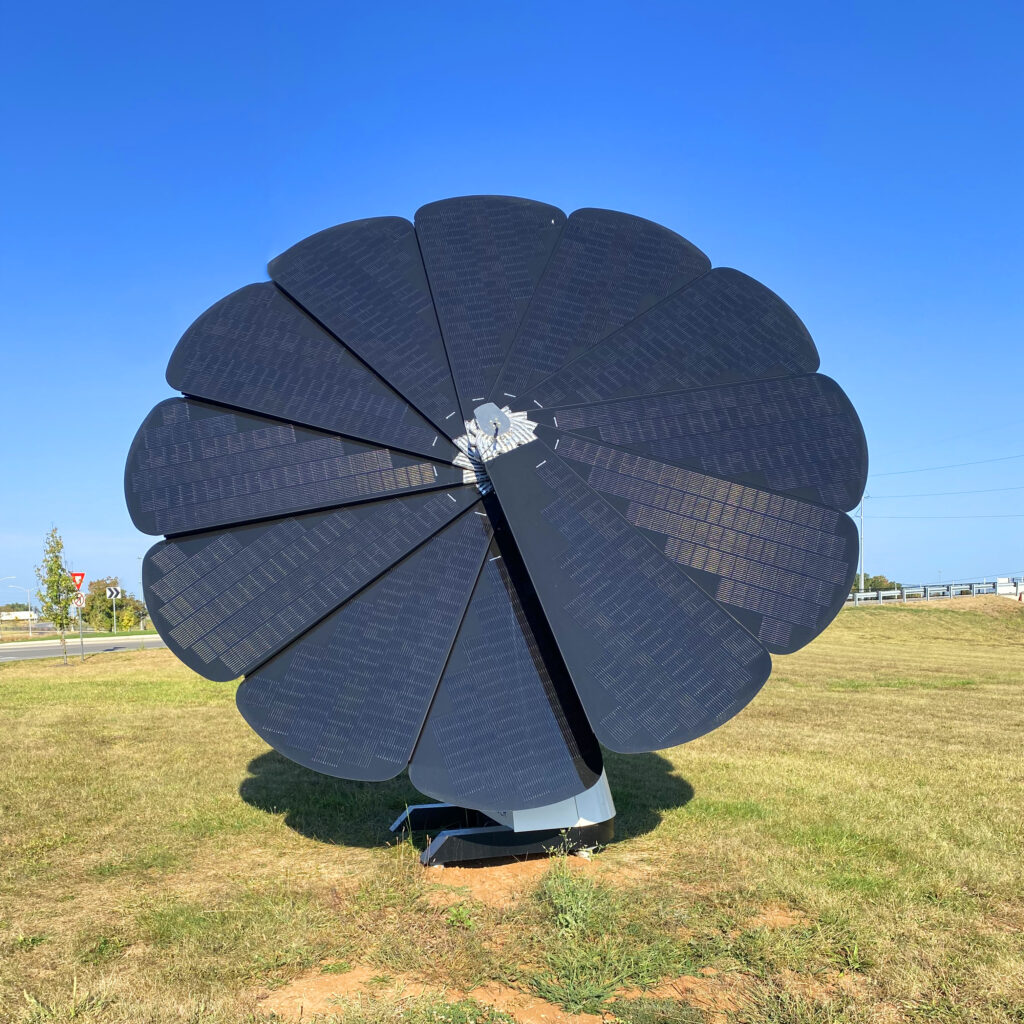When is a ground-mounted solar system the best option, and how are they configured?
Not every building has the right roof—or enough roof space—for solar. When rooftop installation isn’t ideal, or when energy demand exceeds what the roof can support, ground-mounted systems offer a flexible and highly efficient alternative.
These systems are installed on open land near your facility, tilted and oriented for maximum solar exposure. Though they typically require more steel, site preparation, and permitting, they can often produce more energy per watt than rooftop arrays thanks to improved airflow, cooler panel temperatures, and optimal tilt.
- Frees up your roof for future renovations or other uses
- Allows for larger system sizes, especially for energy-intensive operations
- Typically more productive thanks to better orientation and fewer shading issues
- Easier access for maintenance and snow removal
- Can be designed with trackers to maximize sun exposure throughout the day and year
Ground mounts are especially popular for:
- Manufacturing and logistics facilities
- Large landowners and campuses
- Agricultural, rural, or suburban sites with unused acreage
Types of Ground Mount Systems
Mount Type: Fixed Tilt Ground Mounts #

Fixed tilt systems are the most common and cost-effective ground-mounted configuration.
- Panels are installed at a set angle, typically 20–25°, to optimize annual solar production
- Mounted on driven steel posts or concrete footings
- Fewer moving parts = lower maintenance
- Best for systems under 2 MW or when simplicity and durability are top priorities
- Ideal for consistent year-round production in most U.S. climates
Single-post or dual-post structures can be customized to match soil and slope conditions.
Mount Type: Single-Axis Trackers #

Single-axis trackers rotate panels east to west during the day to follow the sun’s path.
- Improve production by 10–25% compared to fixed tilt
- Panels rotate on a horizontal axis (typically north-south)
- Commonly used in utility-scale and large commercial systems
- Require motors and controls, increasing both cost and maintenance needs
- Not ideal for small or shaded sites
Best suited for flat, unobstructed land where maximizing output is a top goal.
Mount Type: Dual-Axis Trackers #

These systems move in two directions, tilting up/down and rotating left/right, allowing the panels to follow the sun precisely throughout the year.
- Capture the highest possible yield, particularly in high-latitude or cloudy regions
- Often used in research facilities or for demonstration projects
- Most complex and expensive to install and maintain
- Typically not used for standard commercial projects
Used when performance per square foot is more important than cost-per-watt economics.
Comparison: Ground Mount System Types
| Feature | Fixed Tilt | Single-Axis Tracker | Dual-Axis Tracker |
| Motion | Static (no movement) | Horizontal rotation (east-west) | Full motion (tilt + rotation) |
| Energy Yield | Baseline | 10–25% higher | Up to 30–40% higher |
| Complexity | Low | Moderate | High |
| Maintenance Needs | Minimal | Moderate (moving parts) | High |
| Best Use Case | Small–mid commercial | Large commercial / utility | Specialized or premium land-constrained systems |
| Cost per Watt | Lowest | Medium | Highest |
Key Design Considerations
When evaluating a ground-mounted system, Melink Solar will assess:
- Soil composition and topography (for post driving or foundation design)
- Local zoning, setbacks, and fencing requirements
- Land use restrictions (agricultural, wetlands, etc.)
- Access roads or service paths for long-term maintenance
- Potential for glare or visibility concerns from nearby properties
Most ground mount systems also require fencing and signage to meet utility and electrical safety standards.
Concerned about roof condition and system longevity?
See Section 3.2: How Long Will My Solar Equipment Last, and What Do Warranties Cover?
Want to compare the costs associated with rooftop systems versus other options?
Refer to Section 4.1: What Determines the Cost of a Commercial Solar Project?
